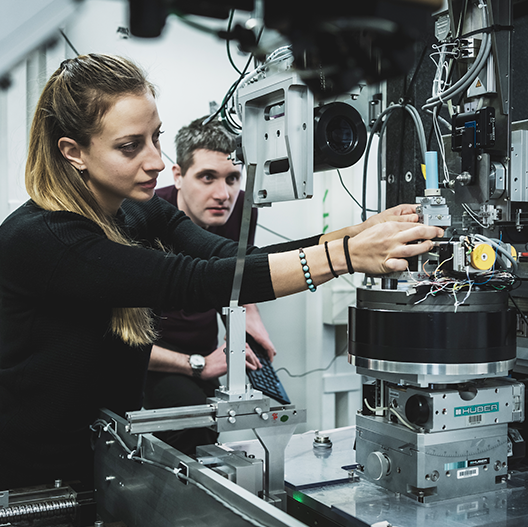- Home
- News
- General News
- Scientists map the...
Scientists map the temperature in lithium ion batteries as they are charged and discharged
17-05-2023
A team led by University College London (UCL) has provided a detailed, internal temperature map of a lithium-ion battery during operation, using a non-destructive method pioneered at the ESRF. These results can assist with battery design to enhance safety and durability. They are published today in Nature.
The success of electrifying transportation relies heavily on improving the performance lithium-ion (Li-ion) batteries. For example, cars need to recharge quickly so they don't spend too much time at charging stations and emerging applications in aerospace require substantial power during take-off.
Temperatures impact all aspects of the Li-ion battery in application: from driving range to vehicle warranty, but is particularly important for durability and safety. High charge/discharge rates can create potentially dangerous temperature rises, that can trigger thermal runaway events, and therefore battery charge/discharge rates in electric vehicles (EV) are limited by a battery management system.
Until now, scientists have measured internal temperature by disassembling the cell to introduce probes that provide only localised information. These adaptations to the cell also impact operation under representative, real-world conditions. Alternatively, they have used computational modelling, which provides estimated values.
To overcome these obstacles, scientists need to be able to measure the temperature inside the batteries accurately while they are being used, but this is a challenge, as batteries are sealed to protect them from contamination and short-circuit.
Now scientists from University College London (UCL), The Faraday Institution and ESRF have found a way to characterise the temperature, state-of-charge and mechanical strain of a battery operated at high rates, at the ESRF. “We have used two different techniques to track the expansion of the current collector, providing a non-destructive method for measuring internal temperature”, explains Paul Shearing, professor at UCL and corresponding author of the publication.
 |
|
Isabella Mombrini and Stefano Checchia, PhD student and scientist on ID15A, respectively, during the experiments on the beamline. Credits: S. Candé. |
The team combined high speed X-ray diffraction computed tomography and multi-channel collimator X-ray diffraction on ID15A to get spatiotemporally resolved maps.
A comparison of two key EV cathode materials (NMC and LFP) showed that during a high C-rate discharge the lower-capacity LFP produced lower temperatures (<45°C) than in high-energy density NMC (70°C), but that under the same absolute electrical current both cells reached a similar temperature. Temperature rise was due to heat accumulation proportional to the absolute current, not cell capacity. Temperatures inside aged Li-ion batteries showed a possible thermal degradation with higher internal resistance that can lead to potential safety risks: “After significant use, some cells can still perform at high currents but their resistance will have risen over their lifetime. This may result in potentially dangerous temperature spikes that could lead to a fire or explosion if the battery is not correctly monitored and controlled.”, explains Tom Heenan, research fellow at UCL and first author of the paper.
The new Extremely Brilliant Source (EBS) at the ESRF has been key in these experiments. “The rapid multidimensional XRD mapping required to study batteries operated at high rates is only possible thanks to the high photon flux at very high energy provided by ESRF-EBS upgrade”, explains Marco Di Michiel, scientist in charge of the beamline ID15A and co-author of the paper.
Heenan thinks that the results “present an extraordinary opportunity: we can design new strategies for the management of temperature under real-world conditions. If EV adoption rates are to be met, we need to be able to check whether new design mitigations are effective or not, and now we can”.
The work was undertaken by researchers working on the Faraday Institution’s Degradation and Safebatt projects, indicating the value of this new technique to understand the influence of thermal conditions on both battery durability safety.
This project has received funding from the InnovaXN doctoral training programme supported by the European Union's Horizon 2020 research and innovation programme under the Marie Skłodowska-Curie grant agreement No 847439.
Reference:
Heenan, J. et al, Nature, 17 May 2023. DOI:10.1038/s41586-023-05913-z
Text by Montserrat Capellas Espuny



